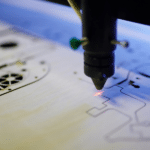The workplace is undergoing a remarkable transformation as innovative smart business technologies take center stage. For business leaders, team members, and anyone curious about the future of work, staying informed about these advancements is more crucial than ever.
Imagine a work environment where automation handles repetitive tasks, data drives every decision, and seamless collaboration spans the globe – this is a new reality that’s now unfolding. Smart business technologies like Artificial Intelligence (AI) and the Internet of Things (IoT) are changing how businesses operate, boosting efficiency and sparking innovation.
This article dives into how businesses can navigate Information Technology (IT) changes and the challenges they bring. Buckle up and explore the future of work, where adapting to smart business technologies is essential for maintaining a competitive edge!
Invest In Training And Development
With digital disruption transforming industries, smart business technologies are inevitable. However, adapting demands a proactive approach, which includes empowering your workforce through continuous training.
Organize workshops where staff members can get hands-on experience with new software or AI-driven processes. Vary learning methods – interactive sessions, online courses, or job shadowing seasoned experts. You can also hire IT professionals in your state to help with the upskilling and training. This equips your team with vital competencies, empowering confident tech adoption while dispelling concerns about obsolescence.
For instance, if you operate a business in New York, consider hiring experienced IT providers to help address the New York IT challenges related to your unique tech integration and skill shortages. These specialized providers offer scalable solutions, access to a skilled talent pool, and expertise in navigating the region’s unique demands. Their support can complement your in-house efforts, accelerating digital transformation while optimizing costs.
Start Small And Scale Up
Embracing smart business technologies shouldn’t be daunting. A gradual, phased approach minimizes disruptions and risks. Start with modest pilot projects to test-drive innovative tools, such as AI chatbots or cloud-based collaboration software, within specific teams or processes. This allows for familiarization, resolving teething issues, and quantifying real-world advantages before company-wide rollouts.
Manufacturers, for example, may initially introduce robotics to assemble a single product line, assessing productivity gains before broader factory automation. Similarly, a retail chain could try automated inventory management in a couple of outlets first. Smooth implementation and positive outcomes like reduced stockouts then justify scaling the system across all stores.
Such calculated starts facilitate smooth large-scale tech adoption by winning over doubts, refining implementation strategies, and extracting maximum value from investments. Organizations leverage these low-risk opportunities to try, tweak, and perfect seamless technology integration aligned with core business objectives.

Collaborate With Tech Partners
Innovative collaboration is crucial for unlocking technology’s true potential. Instead of going at it alone, companies are wisely teaming up with specialized tech partners boasting deep expertise and cutting-edge resources. These collaborations provide vital external perspectives and support throughout the implementation journey.
Take a logistics firm aiming to streamline operations with autonomous vehicles and smart route mapping as an example. Partnering with an autonomous driving startup grants access to the latest self-driving technologies tailored for freight. Such alliances accelerate innovation, leverage complementary strengths, and mitigate costly missteps from a lack of in-house capabilities.
On the other hand, the tech firm gains insights into real-world industry pain points to refine solutions. This symbiotic exchange catalyzes mutual growth while de-risking smart tech adoption for businesses. Ultimately, fostering an open ecosystem of collaboration positions companies at the vanguard of disruption.
Focus On Data Security
Businesses rely heavily on digital information, making data security a priority. A single cyber-attack or data breach can disrupt business operations and damage your reputation. As such, implementing robust cybersecurity measures is essential to protect sensitive information.
Start by encrypting confidential files and setting strict access controls. For an additional security layer, enforce strong password policies and enable two-factor authentication.
Also, update your software and back up critical information to mitigate risks. If a breach occurs, act promptly. Have an incident response plan ready to contain the damage and notify affected parties immediately.
Embrace A Culture Of Innovation
Savvy companies embrace a mindset of continuous improvement and experimentation. Empower your team to think outside the box and propose novel solutions fearlessly. For instance, set aside dedicated time for creative projects or host internal hackathons to cultivate fresh concepts.
However, innovation doesn’t happen without psychological safety. Create an open atmosphere where your team sees failure as a learning opportunity, not something with consequences. Show genuine appreciation when staff members take calculated risks to elevate the business.
You can also reward innovative ideas with incentives or recognition programs. Better yet, involve the broader team in brainstorming sessions to harness diverse perspectives. Nurturing a culture of curiosity and encouraging your squad to explore uncharted territories will breed invaluable innovations.
Conclusion
The future of work is here, and it’s brimming with possibilities. Embracing smart business technologies and fostering a culture of adaptability allows businesses to unlock a new era of efficiency, innovation, and global collaboration. Remember, the journey may be challenging, but the rewards are immense. Prepare, invest, and innovate for a future that promises to be more innovative and more connected than ever before.
Published by: Martin De Juan



















